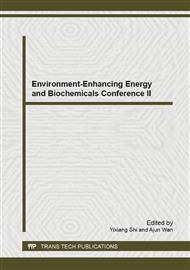[1]
F. Debeaufort and A. Voilley, Methylcellulose-Based Edible Films and Coatings: 2. Mechanical and Thermal Properties as a Function of Plasticizer Content. Journal of Agricultural and Food Chemistry, 1997. 45(3): pp.685-689.
DOI: 10.1021/jf9606621
Google Scholar
[2]
M. Zuo, Y.H. Song, and Q. Zheng, Preparation and properties of wheat gluten/methylcellulose binary blend film casting from aqueous ammonia: A comparison with compression molded composites. Journal of Food Engineering, 2009. 91(3): pp.415-422.
DOI: 10.1016/j.jfoodeng.2008.09.019
Google Scholar
[3]
M. J. Fabra, R. Pérez-Masiá, P. Talens, A. Chiralt, Influence of the homogenization conditions and lipid self-association on properties of sodium caseinate based films containing oleic and stearic acids. Food Hydrocolloids, 2011. 25(5): pp.1112-1121.
DOI: 10.1016/j.foodhyd.2010.10.008
Google Scholar
[4]
S.L. Kamper and O. Fennema, Use of an Edible Film to Maintain Water Vapor Gradients in Foods. Journal of Food Science, 1985. 50(2): pp.382-384.
DOI: 10.1111/j.1365-2621.1985.tb13408.x
Google Scholar
[5]
J. M.U. o.C. -D.D.M. -J. Krochta, C., Edible and biodegradable polymer films: challenges and opportunities, Food technology (1997).
Google Scholar
[6]
F. Debeaufort, J. -A. Quezada-Gallo, et al., Lipid hydrophobicity and physical state effects on the properties of bilayer edible films. Journal of Membrane Science, 2000. 180(1): pp.47-55.
DOI: 10.1016/s0376-7388(00)00532-9
Google Scholar
[7]
G.I. Olivas, J.J. Rodriguez, and G.V. Barbosa-CÁNovas, Edible Coatings Composed of Methylcellulose, Stearic Acid, and Additives to Preserve Quality of Pear Wedges. Journal of Food Processing and Preservation, 2003. 27(4): pp.299-320.
DOI: 10.1111/j.1745-4549.2003.tb00519.x
Google Scholar
[8]
F. Debeaufort, M. Martin-Polo, and A. Voilley, Polarity Homogeneity and Structure Affect Water Vapor Permeability of Model Edible Films. Journal of Food Science, 1993. 58(2): pp.426-429.
DOI: 10.1111/j.1365-2621.1993.tb04290.x
Google Scholar
[9]
M. Martin-Polo, C. Mauguin, and A. Voilley, Hydrophobic films and their efficiency against moisture transfer. 1. Influence of the film preparation technique. Journal of Agricultural and Food Chemistry, 1992. 40(3): pp.407-412.
DOI: 10.1021/jf00015a009
Google Scholar


